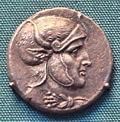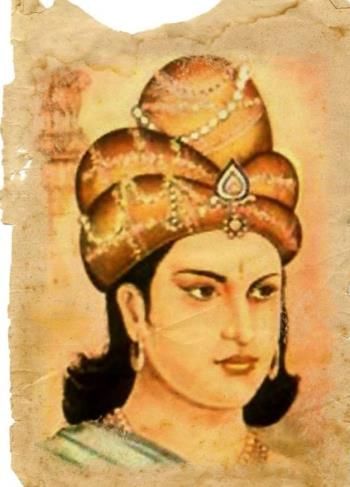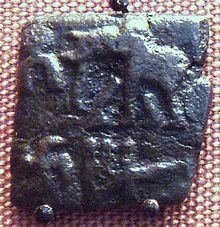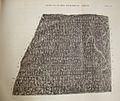Class 9 Exam > Class 9 Notes > History Class 9 ICSE > Chapter Notes: The Mauryan Empire
The Mauryan Empire Chapter Notes | History Class 9 ICSE PDF Download
| Table of contents |

|
| Introduction |

|
| Sources |

|
| Chandra Gupta Maurya |

|
| Ashoka |

|
| Mauryan Administration |

|
Introduction
Imagine a time in ancient India when a single empire united vast lands, from the rugged mountains of the northwest to the fertile plains of the south. The Mauryan Empire, established in the 4th century BC, was a monumental chapter in Indian history, marked by powerful rulers, sophisticated administration, and a profound shift toward peace and non-violence. Founded by Chandragupta Maurya, expanded by Bindusara, and transformed by Ashoka, this empire left an enduring legacy through its governance, trade, and the spread of Buddhism. These notes will take you through the rise, administration, and cultural contributions of this remarkable empire, revealing how it shaped ancient India.- Considered the first and one of the greatest empires in India.
- An empire because it united several smaller states under its control.
- Founded by Chandragupta Maurya in the 4th century BC after defeating the Nandas of Magadha.
- Bindusara, Chandragupta’s son, expanded the empire further.
- Ashoka, Bindusara’s son, is regarded as one of ancient India’s greatest kings.
Sources
Literary Sources
- Arthashastra by Kautilya (Chanakya), Chandragupta’s chief advisor, provides details on politics, diplomacy, administration, and state matters.
- Indika by Megasthenes, a Greek ambassador at Chandragupta’s court, describes societal norms, culture, and people of India.
- Megasthenes, sent by Seleucus, lived in Chandragupta’s court for about five years; his work was later referenced by scholars like Arrian, Strabo, and Diodorus.
Archaeological Sources
- Ashoka’s edicts are the oldest, best-preserved, and precisely dated records of India, including 14 Major Rock Edicts, seven Pillar Edicts, and several Minor Rock Edicts.
- Edicts reflect Ashoka’s policies and events, e.g., Rock Edict XIII describes the Kalinga War’s miseries, leading to Ashoka’s vow against future wars.
- Edicts spread messages of peace, non-violence, and universal brotherhood.
- The Sanchi Stupa, built by Ashoka in the 3rd century BC, is a semi-spherical dome containing Buddha’s relics (teeth, hair, or bones).
- Sanchi Stupa’s gateways are engraved with Jataka stories and events from Buddha’s life.
Chandra Gupta Maurya
- Founder of the Mauryan Empire, defeated the Nandas of Magadha with Kautilya’s help.
- Established the empire after Alexander’s Greek forces attacked India and later retreated.
- Occupied Punjab first, then annexed Magadha, making Pataliputra the capital.
- In 306 BC, defeated Seleucus, Alexander’s commander, who attacked India again.
- Signed a treaty with Seleucus, gaining Kabul, Kandahar, Herat, and Baluchistan, and married Seleucus’s daughter, Helena.
- According to Jain literature, renounced the world after ruling for 24 years.

Bindusara
- Succeeded Chandragupta Maurya and ruled until 273 BC.
- Known as the ‘slayer of foes’ for conquering parts of South India after defeating 16 rulers.
Ashoka
- Succeeded Bindusara, taking the titles Devanamapriya (beloved of the Gods) and Priyadarshi (the beautiful one).
- Ruled until 232 BC.

The War of Kalinga
- Kalinga, a strategically located trade and pilgrimage center, was targeted by Ashoka.
- The Kalinga War occurred in 261 BC; Kalinga’s powerful army resisted fiercely.
- Ashoka conquered Kalinga, but the war caused massive loss, with about 1.5 lakh deaths.
- The war deeply impacted Ashoka’s personal and political life.
Consequences of the Kalinga War
- The war’s devastation led Ashoka to abandon conquest by force.
- Stopped hunting and eating meat on certain days, and gave up a luxurious lifestyle.
- Embraced Buddhism and declared it the state religion.
- War prisoners were employed as agricultural laborers, boosting land productivity and economic prosperity.
- Adopted non-violence, reducing the Mauryan army’s efficiency.
- Ashoka’s empire extended from the Hindukush Mountains in the northwest to the River Pennar in the south, including parts of Nepal, Kabul, Herat, and Kandahar.
Example: After the Kalinga War, Ashoka’s shift to non-violence meant that instead of attacking neighboring states, he sent missionaries to spread Buddhism, promoting peace, like sending his children to Ceylon (Sri Lanka).
Mauryan Administration
- Covered most of India, uniting western, eastern, northern, and southern regions.
- Marked the end of small states, making it a pan-Indian empire.
- Agricultural growth and trade with other countries increased economic prosperity.
- After Kalinga, Ashoka focused on social and economic development rather than wars.
- Arthashastra and Indika provide details about Mauryan administration.
- Administration was divided into civil and military branches.
Civil Administration
Central Government- Highly centralized, with the king holding ultimate power and final decision-making authority.
- The king was aided by a council of ministers called mahamantriparishad, each overseeing a department.
- Key ministers included Purohit (chief priest), Senapati (army commander), Sannidhata (head treasurer), and Samaharta (taxation expert).
- Other roles included Accountant General, Superintendent of Ports, Superintendent of Weights and Measures, and Controller of Commerce.
- Ashoka appointed Mahamantras to ensure the welfare of his subjects.
Provincial Government
- Empire divided into five provinces: Pataliputra, Ujjain, Taxila, Swarnagari, and Tosali.
- Provinces were led by princes called Kumars or Aryaputra.
- Kumars were assisted by mahamatras (governors), Pradeshika (tax collectors), Rajukta (revenue officers, similar to modern Tahsildars), and Yukta (treasurers).
District Administration
- Provinces were subdivided into districts called Janapads.
- Administered by Pradeshika, Rajukta, and Yuktas at the district level.
Administration of Cities
- Major cities included Pataliputra, Taxila, Ujjain, Swarnanagri, and Tosali, headed by a Nagardhakshya.
- Megasthenes noted Pataliputra had a wooden wall with 64 gates and 570 towers.
- Pataliputra’s administration was managed by a 30-member committee handling trade, commerce, industries, tax collection, and foreigner welfare.
The Revenue System
- Land revenue was the main income source, set at one-fourth to one-sixth of produce, depending on soil fertility.
- Irrigated lands had slightly higher taxes.
- Two tax types: Bhaga (agricultural tax) and Bali (religious tax).

- Trade revenue was significant, with Pataliputra, Ujjain, Taxila, and Broach as inland trade centers.
- Overseas trade occurred with Greek kingdoms in Central Asia and the Middle East.
- Toll taxes were imposed on goods for sale, and taxes were levied on forest produce and minerals.
- An efficient spy network included women spies posted across the empire.
- Spies monitored revenue officers, Senapati, and even other spies.
- Ensured oversight of common people, officers, and ministers.
- Informed the king about public opinion on key issues and decisions.
Military Administration
- The Mauryan army was large and well-equipped, with infantry, cavalry, elephants, and chariots.
- Roman writer Pliny recorded 600,000 infantry, 30,000 cavalry, and 9,000 war elephants.
- Main weapons included bows, arrows, shields, and swords.
- Senapati led the army, but the king was the commander-in-chief, making key decisions.
- Soldiers received cash salaries.
- Forts were built at strategic locations for empire security.
Religious Administration
After the Kalinga War, Ashoka embraced Buddhism, declaring it the state religion. Followed the policy of Dhamma, with principles:
Followed the policy of Dhamma, with principles:
- Respect elders and love children.
- Practice ahimsa (non-violence).
- Do good deeds for benefits in the next life.
- Respect all religions.
- Avoid unnecessary rituals.
- Dhamma promoted religious tolerance, moral living, and peace, enabling welfare works.
Ashoka’s steps to spread Buddhism:
- Appointed Dhamma Mahamatras to propagate Buddhism.
- Patronized Buddhism, sending his son and daughter to Ceylon (Sri Lanka).
- Banned animal slaughter in the royal kitchen and set 56 days annually when animals could not be killed.
- Inscribed edicts on stones to spread peace, non-violence, and brotherhood.
- Sent missionaries to Nepal, Egypt, Syria, and Myanmar.
- Convened the Third Buddhist Council to resolve Buddhist differences.
- Practiced religious tolerance, not forcing Buddhism on his subjects.
Example: Ashoka’s Dhamma Mahamatras acted like modern community workers, teaching people about non-violence and helping resolve local disputes, fostering a peaceful society.
The document The Mauryan Empire Chapter Notes | History Class 9 ICSE is a part of the Class 9 Course History Class 9 ICSE.
All you need of Class 9 at this link: Class 9
|
14 videos|59 docs|16 tests
|
FAQs on The Mauryan Empire Chapter Notes - History Class 9 ICSE
| 1. Who was Chandra Gupta Maurya and what were his contributions to the establishment of the Mauryan Empire? |  |
Ans. Chandra Gupta Maurya was the founder of the Mauryan Empire in ancient India. He established the empire around the fourth century BCE after overthrowing the Nanda Dynasty. His significant contributions include unifying various smaller kingdoms into a large empire, implementing a centralized government, and laying the foundations for a vast administrative system. He also strengthened the economy through trade and agriculture.
| 2. What role did Ashoka play in the Mauryan Empire and how did he influence its expansion? |  |
Ans. Ashoka, the grandson of Chandra Gupta Maurya, was one of the most prominent rulers of the Mauryan Empire. He reigned during the third century BCE and is known for his efforts to expand the empire through military conquests as well as his promotion of Buddhism after the Kalinga War. His policies of Dhamma emphasized non-violence, religious tolerance, and welfare for all, which significantly influenced the cultural and social fabric of the empire.
| 3. How was the Mauryan administration structured and what were its key features? |  |
Ans. The Mauryan administration was highly structured and centralized. It featured a hierarchical system with the emperor at the top, followed by a council of ministers, provincial governors, and local officials. Key features included an extensive bureaucracy, a system of taxation, well-maintained roads for trade and communication, and the use of spies for intelligence. This organization helped maintain control over the vast empire and facilitated governance.
| 4. What were the major achievements during the Mauryan Empire in terms of trade and culture? |  |
Ans. The Mauryan Empire achieved significant advancements in trade and culture. It established extensive trade networks that connected India with regions like the Mediterranean and Central Asia, boosting economic prosperity. Culturally, the empire is known for promoting art and architecture, including the construction of stupas and rock edicts, and the spread of Buddhism, which played a crucial role in shaping Indian civilization.
| 5. What was the significance of the Edicts of Ashoka and how did they reflect his governance philosophy? |  |
Ans. The Edicts of Ashoka are a series of inscriptions on pillars and rocks that communicate his policies and ethical principles. They reflect his governance philosophy of Dhamma, which emphasizes moral conduct, compassion, and social welfare. The edicts promoted non-violence, religious tolerance, and respect for all life forms, marking a significant shift in governance from military conquest to moral leadership and social responsibility in the Mauryan Empire.
Related Searches















